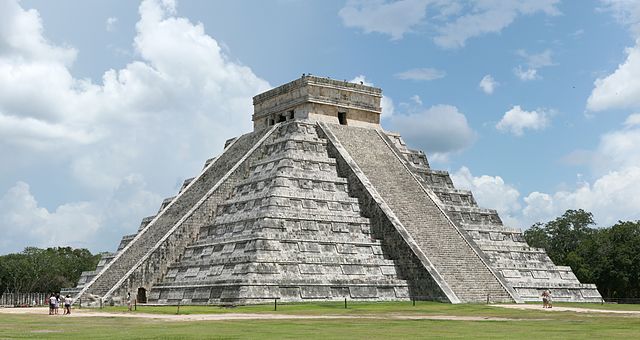Summary | Excerpt | Reviews | Beyond the Book | Read-Alikes | Genres & Themes | Author Bio

Critics' Opinion:
Readers' Opinion:
First Published:
Oct 2020, 464 pages
Paperback:
Jun 2021, 496 pages
 Book Reviewed by:
Book Reviewed by:
Debbie Morrison
Buy This Book
This article relates to Black Sun
 One of the most spectacular elements of Rebecca Roanhorse's Black Sun is its deep dive into pre-Columbian culture and beliefs. In a stark departure from the usual medieval European landscape used as a foundation in fantasy novels, Roanhorse instead uses the ancient landscape and religions of the Americas as the blueprint for her work. In Black Sun, there is a conflict between the ruling cult of the Sun Priest and one of the old gods in the city of Tova. But readers learn that even this returning god is only one of many that the people worship.
One of the most spectacular elements of Rebecca Roanhorse's Black Sun is its deep dive into pre-Columbian culture and beliefs. In a stark departure from the usual medieval European landscape used as a foundation in fantasy novels, Roanhorse instead uses the ancient landscape and religions of the Americas as the blueprint for her work. In Black Sun, there is a conflict between the ruling cult of the Sun Priest and one of the old gods in the city of Tova. But readers learn that even this returning god is only one of many that the people worship.
As demonstrated in the novel, religious traditions in the pre-Columbian Americas were not monolithic. However, the major pre-Columbian civilizations — Aztec, Maya, Inca, Toltec, and Olmec — did have striking similarities. These similarities include a large, overlapping pantheon of gods; focus on celestial events and calendars; and ritual sacrifice. Just as many Greek deities had Roman counterparts, pre-Columbian gods in the Americas were often only distinguished by alternate names. For example, both the Mayans and Aztecs worshiped creator gods who helped the first mortals establish their civilizations. The Mayans called this figure Kukulkan while the Aztecs called the same figure Quetzalcoatl; and Quetzalcoatl may have been borrowed from the Toltec. Interestingly, the names of both of these incarnations of the deity translate roughly to "feathered serpent," lending credence to the idea that these were just different manifestations of the same creator. Scholars generally agree that there is an interrelation between these gods rather than separate, spontaneous development, but do not agree as to how this cross-emergence came to be.
Pre-Columbian societies in the Americas also found significant meaning in celestial bodies and events. These societies all demonstrated careful attention to astrology and a belief that astrological occurrences, such as eclipses and solstices, generated power and/or energy that could be harnessed by priests and other holy people. The various pyramids found throughout the Meso-American world are a manifestation of this widespread belief. These pyramids were built at points (or axis mundi) considered religiously and/or energetically significant. (Roanhorse's novel mirrors this belief in its representation of settings like Sun Rock and the Celestial Tower.) These celestial observations were an enormously important part of everyday life in the pre-Columbian Americas as interpretations of the stars influenced everything from marriages and coronations to crop rotations.
Finally, these societies were also similar in their use of sacrifice and/or self-sacrifice (such as bloodletting). The Aztecs are perhaps the most famous for performing ritual sacrifice. The image of a priest cutting someone's heart out appears fairly regularly in pop culture, such as in the film Apocalypto (the film centered around the Maya civilization but the rituals depicted were Aztec). However, ritual sacrifice was not confined to the Aztecs. It spanned the entire pre-Columbian landscape and era. There are records as early as the 1200s of sacrifice among the Olmec people. And even though conquistadors later reported these ritual sacrifices as mere barbaric bloodlust, the religious sentiment behind them was genuine.
The people in the pre-Columbian Americas believed that they had been created by, and owed their lives to the gods, and that the blood in their veins was a vestige of the divine. Bloodletting was a way for them to honor that divine gift, to offer some repayment, or to curry favor. Moreover, sacrifices were often made at religiously significant locations (temples, observatories, axis mundi). In Roanhorse's work, we get minor references to ritual sacrifice as something that happened in the past, but we get multiple references to self-sacrifice as a way to honor or interact with the gods. In self-sacrifice, like the ritual sacrifice of others, blood was the most precious commodity and worshippers would shed their own blood (or sometimes take their own lives) as an offering to the gods. Like many other cultures, the religions of the Mesoamericans did not survive colonial rule intact. In many cases, the rituals disappeared or were subsumed into the Catholicism of the conquistadors.
Filed under Places, Cultures & Identities
![]() This article relates to Black Sun.
It first ran in the November 18, 2020
issue of BookBrowse Recommends.
This article relates to Black Sun.
It first ran in the November 18, 2020
issue of BookBrowse Recommends.





The Flower Sisters
by Michelle Collins Anderson
From the new Fannie Flagg of the Ozarks, a richly-woven story of family, forgiveness, and reinvention.

The House on Biscayne Bay
by Chanel Cleeton
As death stalks a gothic mansion in Miami, the lives of two women intertwine as the past and present collide.

The Funeral Cryer by Wenyan Lu
Debut novelist Wenyan Lu brings us this witty yet profound story about one woman's midlife reawakening in contemporary rural China.
Your guide toexceptional books
BookBrowse seeks out and recommends the best in contemporary fiction and nonfiction—books that not only engage and entertain but also deepen our understanding of ourselves and the world around us.